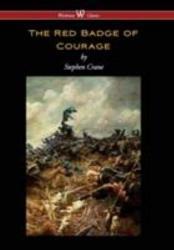
The Red Badge of Courage is really not a great book. It is centered around the Civil War and tells the story of Henry, a Union soldier who leaves his farm to go fight. During the war he cannot make up his mind to run away from the field or stick with his friends in battle. While some might find the book interesting, personally it just dragged on and on. Sometimes it would go really in depth into a battle or a part of the story that was not very important and in others it would just gloss over a major part that you needed to understand. I would not recommend this book to anyone as it is hard to understand and is not very well written.
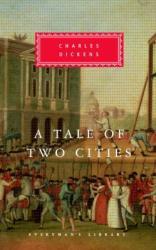
A Tale of Two Cities is a captivating book. Set during the period leading up to and during the French Revolution, the book details how the French aristocracy and the French Revolution affected the rich and the poor through the stories of Charles Darnay and Alexandre Monette. It also shows the angry and vengeful side of the Revolution through the Defarge's and their wine shop. A scene where a wine cask is dropped demonstrates the desperation and poverty experienced by the citizens of Paris that led to the anger behind the revolution. Dickens also brings the book to life through life-like characters that emotionally invest readers in the story. Alexandre Monette exhibits fatherly care for his daughter, yet he also struggles to deal with his time in prison, leading him to rely on his daughter for support. Sydney Carton contains likeable aspects mixed with relatable flaws that make him instantly lovable. Dickens expertly connects each scene to develop the story and foreshadows multiple aspects of the climactic ending throughout the book.
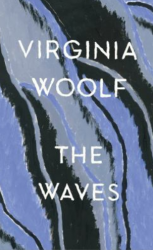
The Waves is an astounding novel by Virginia Woolf, known as her most experimental work. The novel is split into nine sections, each separated by a short passage describing the sea at a certain time of day; as the book progresses, these intercalaries move from sunrise to sunset to mirror the lives of the characters as they age in the succeeding chapters. The Waves is unique because Woolf uses a stream of consciousness writing style to capture the thoughts of her characters rather than dialogue, enhancing her characterization and creating her own take on fiction. The novel follows the lives of six friends, beginning with their childhood together. It explores the depths of human thought and as they grow older, and dives into questions of mortality and purpose. Each of the characters is starkly different from the rest, shedding light on the complexities of life through multiple perspectives.
Woolf does an amazing job of creating emotional depth in this short yet vast novel. I found everything from her descriptions of the ocean and the earth to the nuances of ordinary life to be very beautiful. Woolf's questioning of existence through her characters led me to consider my own life, and I found myself often completely immersed in her vivid imagery and rich writing style.
This novel is realistic in that the characters are all flawed in some way, and have their own fears and dreams. The illumination of their internal conflicts through stream of consciousness makes the book very personal and intimate, which is a rare experience.
I can't even begin to do justice to The Waves, so I strongly recommend that all young adults and adults read it for themselves. It has been one of of the most thought-provoking books I've ever read, and there is something in it for everyone. Virginia Woolf's The Waves is a wise commentary on humanity and a magnificent work of art; it should be read to be believed.
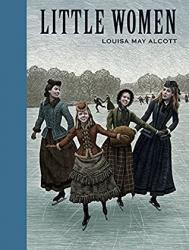
Louisa May Alcott's well-known classic Little Women tells the story of four sisters in the time of the Civil War: Meg, who longs for a life without poverty; Jo, a tomboy and writer; Beth, quiet and kind; and Amy, who has elegant taste in art and life. These four girls, with the help of their mother, learn lessons that help them carry their burdens with thankful hearts and lean on each other throughout the trials they face. The novel spans ten years, and follows the lives of the March family and their friends. It highlights the small joys of childhood, adventures at home and abroad, growing up, loss, and falling in love.
Alcott's writing is insightful, touching, and humorous; she draws the reader in emotionally and offers her wisdom generously. Little Women is an important narrative of ordinary life which both amuses and grieves, and should be read by all teens. Not only does it put life into perspective; it also relates to teenagers today despite being written nearly two-hundred years ago. Any audience will be able to connect with at least one of the March sisters--especially young women. Meg, Jo, Beth, and Amy become as dear to readers as family throughout their journey to adulthood. If you enjoy heartwarming stories and historical fiction, this book is for you!
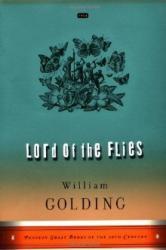
This book begins with the crashing of a schoolboy's evacuation plane, which leaves them stranded on an island and left to fend for themselves. It is rich in figurative language, although it may be hard for some people to understand because it is written in old-style English. Symbolism is a strong component as well, considering that this book is an allegory, so paying attention to every detail and symbol is important. The author wrote the characters to display a mental change, which emphasizes how the lack of civilization transforms these young schoolboys into feral beasts. The ending of this novel sums it up perfectly and explains any actions that might've confused the readers when enjoying this book.
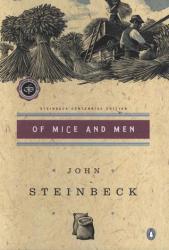
I read this book my Freshman year of high school for English class. I know that Steinbeck is a very famous author, but I just didn’t really care for this book. I thought the story, which is about two men looking for work during the Great Depression is rather boring. I cry while reading sad parts in books all the time, but for some reason the sad ending in Mice and Men just wasn’t as sad as people made it out to be. Overall, I wouldn’t recommend this book, I didn’t like the plot or Steinbeck’s writing style.
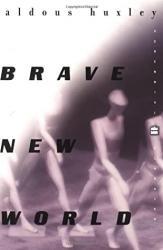
Brave New World is a classic dystopian novel, written in the early 1930s by Aldous Huxley. Set in a society in which humans are manufactured and programmed depending on their assigned social class, it addresses individualism, conformity, and the dangers of complete government control. Citizens in this dystopia frequently take a drug to subdue their emotions, living in a state of ignorance and 'bliss' as they go through the motions unquestioningly. In order to keep the system of manufacturing people running smoothly, certain things are considered taboo--such as literature, religion, and family--while what we typically consider unorthodox is commonplace in this society.
The story follow several central characters who don't completely fit in or believe there could be more to life than what they experience every day. Huxley takes readers to a 'Savage Camp' where John, the protagonist (whose ideals are completely different from everyone else's), is introduced, and the other characters experience an extreme contrast to their advanced and ordered society. Readers experience John's intense internal conflict as he attempts to find his place in the new world into which he is thrust; they also learn more about the ideology of the dystopia, and what goes on behind its 'perfect' facade.
I enjoyed most aspects of Brave New World, and would recommend it to dystopian readers who appreciate a deeper meaning. However, there were some parts of this novel that I found disturbing, as what's considered taboo is the opposite of how we view things in our world. Sometimes I had trouble connecting with the story emotionally, and I would've liked more specifics about how the dystopia came to be. But looking past the negatives, the themes Huxley brings up are very important, and even pertinent to society today. His characters have depth, the underlying themes make readers think, and overall it is an interesting concept of a future world with complete dictatorship. Brave New World is a classic that I believe everyone should read.

Things Fall Apart by Chinua Achebe is an amazing description of pre-colonial African culture as well as a detailed description of the initial consequences and longer-term impacts of colonization. It follows Okonkwo, a man who was the most powerful member of his village up until the arrival of the colonists. Okonkwo is the manliest of men and believes he must show no weakness. Okonkwo is a representation of the African culture as the colonists arrive. His personal feelings and reactions are very similar to those of all Africans during this strange period. I would recommend this book to anyone who wants to learn more about African culture, but I think everyone should try it because it is an important piece of history, telling the story of a people trying to survive against the colonial onslaught through the story of a man trying to find his way in the world.
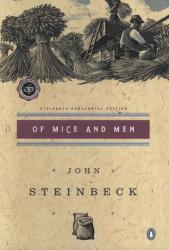
Of Mice and Men by John Steinbeck is a tale of grief and hope in the midst of the great depression. It begins with two men, George and Lennie, who are searching for work on a farm. George is witty and small while Lennie is mentally handicapped but enormous and physically strong. Both George and Lennie, as well as the other workers they meet, begin to represent the nation as a whole during the depression. Showing the struggles of every person in those horrible times. I think the novel is a sad story but it is a good representation of the personal and societal impacts of the depression and I think everybody should read it at least once.
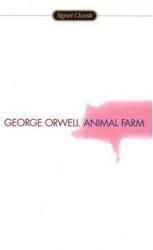
Animal Farm by George Orwell was published in 1945 16 years after Joseph Stalin came to power in the Soviet Union. The book chronicles the formation of the Soviet Union as well as major historical soviet events. The on twist, all Soviet leaders and classes of citizens are represented by farm animals! I love this book because the reader must infer who each animal represents. Once you have that figured out, there are many events in the book that can be tied to real-world events! I enjoyed this book a great deal and I would recommend it to anyone who has a desire to learn about Soviet history or enjoys books that make the reader piece together missing story elements.
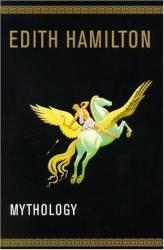
Edith Hamilton's collection of Greek and Roman stories covers the gods, creation, and earliest heroes; stories of love and adventure, the great heroes before the Trojan War, the heroes of the Trojan War, the great families of Mythology, the 'less important' myths, and the mythology of the Norsemen. There are over 100 Greek/Roman/Norse stories, and a family tree and glossary of all the gods and goddesses included. A bonus was the illustrations which were really detailed. I read this book because I wanted an introduction to the Greek gods and goddesses before reading the PercyJackson and Olympians series, and I think it's a great book to gain somefamiliarity with the mythological characters.
My favorite short stories were: The Underworld, Cupid and Psyche, Pyramus and Thisbe, Perseus, Theseus, Hercules, and Antigone.
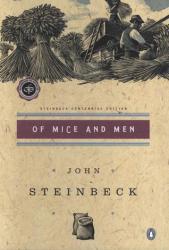
George and Lennie are two laborers searching for work in California. While George is small and quick, Lennie is a man of tremendous size and has the mind of a young child. Despite their differences, they have formed a "family", clinging to their dream of owning an acre of land and producing their own produce. When they find a job at a ranch in the Salinas Valley, fulfilling their dream seems to be within their grasp, but conflict arises when Lennie begins a flirtatious relationship with the ranch owner's wife, and even George can't protect him from that.
I liked this book! Lennie and George's relationship is heartwarming, and it shows that having close friends can make even the hardest life bearable. My favorite characters were Crooks and Lennie. Crooks, who lives by himself because he is the only black man on the ranch, shows how discrimination affects mental well-being. Like Lennie, Crooks has been outcasted and looked down upon by society for something he can't control, and I liked how Steinbeck brought two very different characters together by sharing their shared loneliness. George is a complicated character because, at the end of the book, he does what he believes is 'best for Lennie' but it begs the question of how far a friend should go if it's in 'your best interest'. I watched the movie as well, as it was also really good!
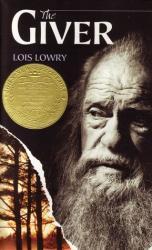
Jonas lives in a society where everyone is treated equally and given the same opportunity. Except for the Committee of Elders and special people lie The Giver, no one has 'special privileges'. Jonas, like everyone in his society, has a sister and two parents who were specifically handpicked to be his 'perfect parents'. In Jonas' society, no one sees color or has memories of the 'time before' beside The Giver. Eventually, Jonas is picked as the next Giver and begins his training once he officially becomes a teenager. During his training, Jonas experiences pain and happiness for the first time, and he's granted the ability to see color. After The Giver dies and Jonas becomes the new Giver, he finds it difficult to cope with the burden of enduring all the pain and suffering from the past and decides to run away.
I liked this dystopian novel. Jonas' society seems perfect on the outside, but once I met The Giver, I realized that people like Jonas could live perfect lives at the detriment of people like the Giver and Birthmothers who are isolated from the rest of society and treated based on what they can provide instead of their actual character. At first, I didn't like Jonas because he didn't think for himself and he always followed the rules. By the end of the book, after he's received all The Giver's memories, he starts to stand up for what he believes in. He even tries to save his family but sees that they're too brainwashed by the Committee of Elders.
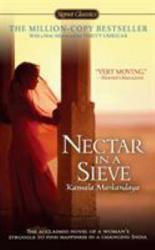
This novel follows the life of a young Indian girl named Rukmani, who is married off at the age of twelve. She marries a poor farmer, Nathan: because she has three older sisters and is not as "desirable" by Indian standards, her parents cannot find a better suiter besides a poor farmer. Throughout their marriage, Rukmani and Nathan struggle with poverty, and misfortune. In addition, British colonizers have set up posts in their town, further destroying Rukmani and her family's sense of community and opportunity.
My favorite character is Rukmani because of her complexity. She is a flawed and interesting character because, on one hand, she breaks the gender norms of her culture and often finds ways to support the family even when Nathan can. However, I will argue that Rukmani is complacent in her poverty and accepts things as the way they are knowing she could do better. I also really liked how this book touched on intergenerational conflicts. Rukmani often finds herself detached from her children because they're growing up in westernized society. Nathan is my least favorite character because he's just...there. Overall, this was a good book because it exposed me to a different culture.
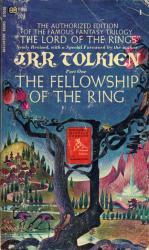
The Fellowship of the Ring is about a company of people of different sizes, shapes, and cultures, living in an imaginary world: Middle Earth. These people come together when Bilbo Baggins, a hobbit, runs away from his house after his 111th birthday, but he leaves behind the Ring of Power. Hobbits are short people who live in Hobbiton, a place in Middle Earth. The Ring of Power is a ring that one of the antagonists, Sauron, created for the destruction of Middle Earth.
The company now comes together to destroy this Ring, but it can’t be destroyed with ordinary means, like stomping on it or casting it into fire. The ring can only be destroyed if it is thrown into the place it was created at, Mount Doom, a volcano in Sauron's evil layer known as Mordor. The company knows that Sauron will search all of Middle Earth for the Ring, so the company decides to take it to Mount Doom.
At a petrifying moment, the company goes over a mountain range, but it is too cold for people to survive, so they head to the Mines of Moria, an underground series of tunnels. Everything was going fine until a person accidentally made noise by throwing something down a well. Then, they have to run to the exit because they awakened their evil pursuers, like the Balrog of Moria, a giant humanoid creature with a whip. The Balrog drags a member of the company down a cliff, and they fall for over 8 whole days.
This book is full of fantasies, and it really holds a grip and is hard to put down, and for that reason, I'm going to go with 4/5 stars for The Fellowship of the Ring.
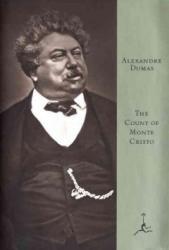
The Count of Monte Cristo by Alexandre Dumas is an amazing novel about betrayal and revenge. It follows the life of Edmond Dantès, a young first officer of a shipping company in Marseille, France, as he draws into port, ready to greet his enchanting fiancée Mercedes. However, Dantès’ happiness is short lived as he is betrayed by his closest friends and his life is upended for several decades. When Edmond finally returns as the Count of Monte Cristo, he is determined and set on vengeance, and he has the money and intelligence to annihilate those who dared to betray him. The Count of Monte Cristo is without a doubt my favorite book as it vividly describes the manipulations of the count and how his enemies struggle to break free of his grasp. I would recommend this book to everyone, especially those who enjoy complex stories where not all actions of the characters are written on the page but must be deduced by the reader.
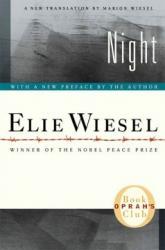
I had to read this book in English class Freshman year. I honestly wasn't expecting to like it as much as I did. It's a true story called "Night" written first hand by Elie Wiesel about the Holocaust. It's about a young boy and his family that got sent to Auschwitz and Buchenwald concentration camps. This book is extremely well written, and is a really sad story. There was one part, I won't spoil it, but I couldn't stop crying. "Night" really gives you a look at what it would have been like to be in Elie's shoes. Overall, of course this is quite a sad book, but I would highly highly recommend!!

A Wrinkle in Time is unlike any Science Fiction novel I have ever read. It is exciting and scientific and even a little romantic like every other science fiction novel, but it grapples with other ideas like how one thing (yet to be revealed) helps to conquer the darkness inside us and all around. It follows Margaret (Meg) Murry in the search for her missing father but at the same time follows a search in understanding herself. She wants more than anything to find her father because he was the one who made her feel like herself and now that he is gone, she feels lost. Her genius younger brother Charles Wallace is a major player in Meg's journey to find herself and in the end is what will trigger the one thing she has that the darkness does not.
I first read this book in third grade as required reading, but since then I have probably read it over ten times. It is one of those books that you get something new out of every time you read it. I have also never read such a creative book. Madeleine L'Engle makes it interesting and unpredictable while at the same time tying in internal struggles. Everyone can relate to Meg and will learn from her struggles by reading this book.
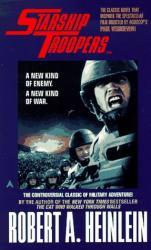
Starship Troopers exemplifies the signature writing style of Heinlein: an outrageous setting that still manages to capture familiar aspects of everyday life. I marveled at the intricate universe Heinlein crafts. He describes every aspect of political relations with alien species and the intricacies of a military that ranges across the stars. The book follows a boy named Juan Rico as he comes of age and joins the infantry. Heinlein describes every aspect of Juan’s life in basic training and the great battles of his career like an ancient epic; sparing no detail and giving elaborate descriptions of the enemies of humanity and the battles in which they were defeated. Starship Troopers is the perfect science fiction novel for someone who is looking for heaps of action combined with drops of philosophy and social commentary, all brought together into one spectacular and dazzling universe.
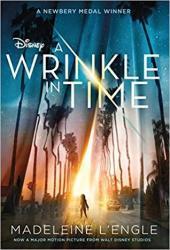
A Wrinkle in Time is an amazing book that brings fantasy mechanics into science, and makes it as real as possible. It starts off with Meg, a brilliant child in a family of brilliant people, who is struggling with grades. She blames it on herself, but she goes on and explains that it's because her father suddenly left, upsetting her natural world. A Wrinkle in Time brings together amazing description techniques, and interesting science mechanics, with quite a bit of humor. Overall, this book is one of my favorites of all time.




